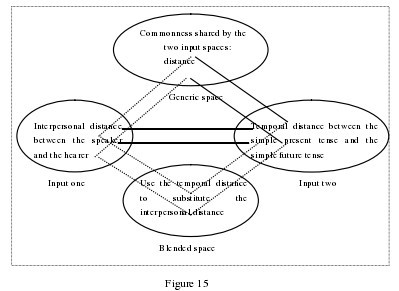联系方式
more本类最新英语论文
- 2024-05-28多模态协同教学模式在初中英..
- 2024-05-23英语话题转换标记的语法化探..
- 2024-05-10中国英语学习者书面语中情态..
- 2024-04-18基于cbi的初中英语语法教学..
- 2024-07-12融入型和分离型形式聚焦教学..
- 2024-04-07教师反馈与同伴反馈结合模式..
- 2023-12-10多模态教学模式应用于欠发达..
- 2023-11-30句法-语篇界面视角下中国英..
- 2023-11-19句法-语篇界面视角下中国英..
- 2023-11-05英汉散射型虚拟位移表达的比..
more热门文章
- 2010-03-11the use of conditional se..
- 2009-08-08英语语法论文:名词化的生成..
- 2009-08-08英语语法论文:英语不定式和..
- 2009-08-16对比研究运算效率与英汉双及..
- 2009-08-07英语论文:汉英动宾结构比较..
- 2009-08-16研究英汉单位词语用搭配对比..
- 2010-06-11 the comparison between c..
- 2010-05-30英语语素与音位、义素的联系
- 2009-08-16探究虚拟式中should的功能
- 2017-08-29研究性学习在高中英语语法教..
more留学论文写作指导
- 2024-05-14《反论》(节选)英汉翻译实..
- 2024-05-07《湖泊的一生》(节选)英汉..
- 2024-03-31卡森•麦卡勒斯小说中..
- 2024-03-28美国黑人女性心理创伤思考—..
- 2024-03-27乔治·艾略特《织工马南》中..
- 2024-03-21超越凝视:论《看不见的人》..
- 2024-03-19《哈克贝利•费恩历险..
- 2024-03-13心灵救赎之旅——从凯利的三..
- 2024-02-22文学地理学视角下的《印度之..
- 2023-05-03英、汉名词短语之形容词修饰..
英语时态非典型时间指向认知概述 [3]
论文作者:www.51lunwen.org论文属性:硕士毕业论文 thesis登出时间:2014-09-01编辑:lgg点击率:6020
论文字数:32600论文编号:org201408201201382566语种:英语 English地区:中国价格:$ 66
关键词:English tense概念整合非组合型概念整合截搭型概念整合糅合型概念整合
摘要:本文是英语语法论文,The author of this thesis aims to explore the internal cognitive mechanism ofthose non-prototypical temporal orientations in English tense by applying theconceptual blending theory.
4.3 The Non-Prototypical Temporal Orientation in the Simple Past Tense........ 49
4.4 The Non-Prototypical Temporal Orientation in the Simple Future Tense .... 59
4.5 Summary..... 64
Chapter Five Conclusion..... 65
5.1 Summary..... 65
5.2 Contributions and Implications...... 66
Chapter Four the Non-Prototypical Temporal Orientation inEnglish Tense within CBT Network
4.1 Introduction
In this chapter, the author will discuss the non-prototypical temporal orientationin English tense within the conceptual blending network. Traditionally, tense isdeictic in nature. Tense is time distinction. The simple present tense is used todescribe states or events happening at the present time of speaking, which is theprototypical usage of the simple present tense. However, since people’s emotion isincreasingly rich and complicated and language can’t meet their need to expressthemselves, the simple present tense is no longer limited to its original usage. Thesimple present tense can be used to refer to the state or event in the past or in thefuture, which are the non-prototypical temporal orientation of the simple presenttense. Likewise, the simple past tense is not only used to describe the state or eventoccurring at the past time. The simple past tense can be used to describe a kind ofcounter factuality, or be used as a means of pragmatic softener, which arenon-prototypical temporal orientation of the simple past tense. Similarly, except forthe temporal orientation, the simple future tense can be used as a means to ask forpermission, which is also the non-prototypical temporal orientation of the simplefuture tense.

…………..
Conclusion
First, the author of this thesis has applied the conceptual blending theory intoexploring the cognitive mechanism of those non-prototypical temporal orientationsin the English tense, which provides a crucial novel aspect in explaining the Englishtense system. Cutting-joining blending blends two related but not similar conceptstogether to make the simple present tense be used to indicate the past or the future.Mixture blending blends two similar but not related concepts together to make thesimple past tense be used to describe a kind of counter factuality or be used as ameans of a pragmatic softener. Mixture blending also makes the simple future tensebe used to ask for permission.Second, the conceptual blending theory is used to demonstrate the cognitivemechanism of those non-prototypical temporal orientations in the English tense,which strengthens the explanatory power of the conceptual blending theory. Previousstudies have mainly concentrated on applying conceptual blending theory into thestudies of humors, puns, ironies and so on. In this thesis, the author has usedconceptual blending theory to explore the cognitive mechanism of thosenon-prototypical temporal orientations in the English tense, which broadens theexplanatory ranges of conceptual blending theory.
…………
Reference (omitted)

 英国
英国 澳大利亚
澳大利亚 美国
美国 加拿大
加拿大 新西兰
新西兰 新加坡
新加坡 香港
香港 日本
日本 韩国
韩国 法国
法国 德国
德国 爱尔兰
爱尔兰 瑞士
瑞士 荷兰
荷兰 俄罗斯
俄罗斯 西班牙
西班牙 马来西亚
马来西亚 南非
南非






